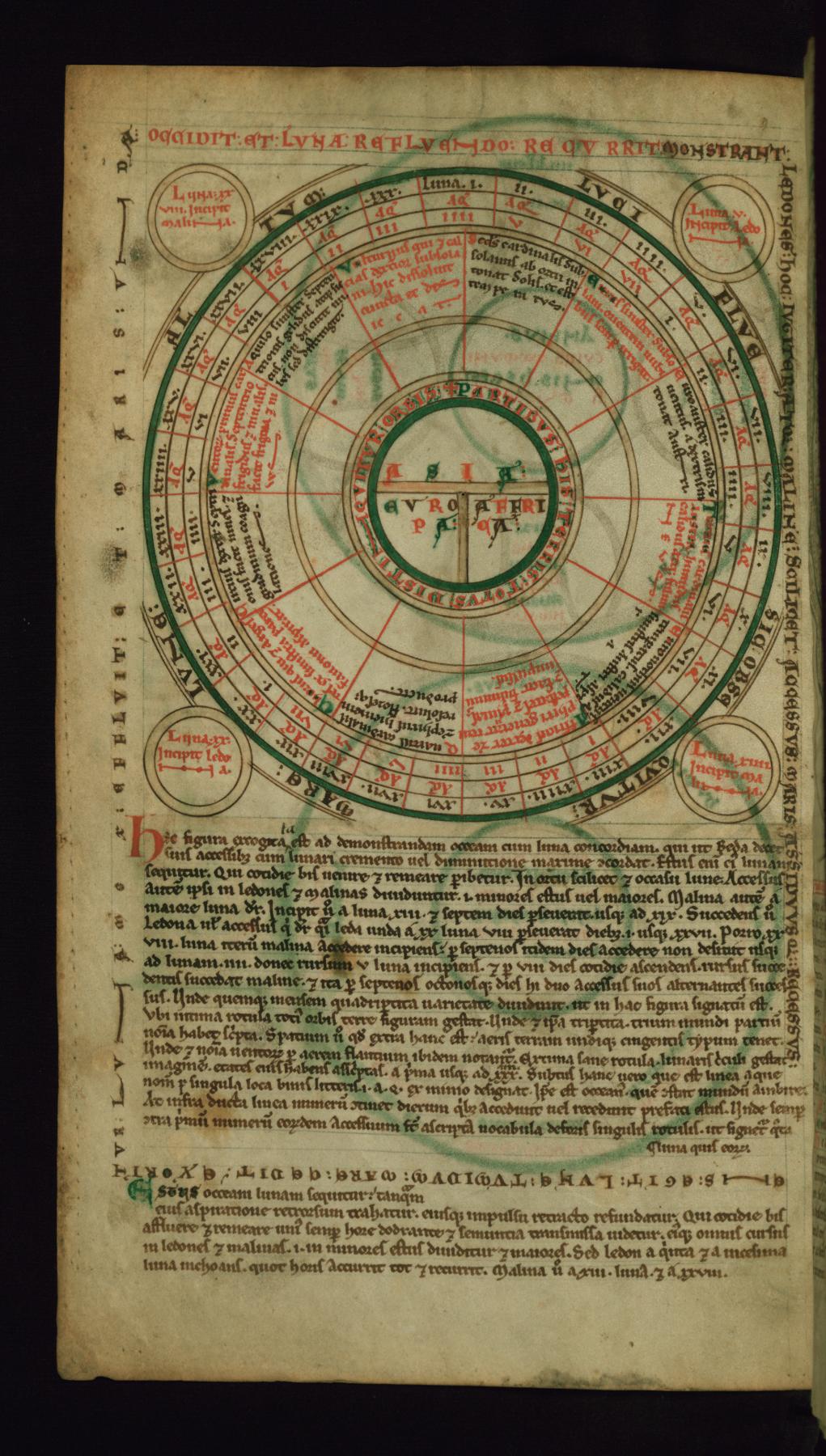Tidal Diagram (Rota)
(Manuscripts and Rare Books)
This wheel-shaped diagram illustrates the monthly movement of the tides, and shows the correspondences between the tides and the age of the Moon as set out in the English scholar Bede's (d. 735 CE) De natura rerum (On the nature of things, XXXIX). The T-O map of the inhabited world occupies the diagram's center. The twelve sectors contain brief characterizations of the twelve winds. The first of the three outer rings shows four tidal cycles of seven or eight days each; the next ring, labeled "water" (aqua) thirty times, represents the ocean surrounding the world. The last ring in this group gives the days of the lunar or synodic month, beginning at top. The four small circles at the corners--perhaps four representations of the Moon--give the days of the two lesser (or lowest) tides and the two greater (or highest) tides of the month.
Provenance
Provenance (from the French provenir, 'to come from/forth') is the chronology of the ownership, custody, or location of a historical object. Learn more about provenance at the Walters.
Gruel and Englemann Collection, Paris [1]; acquired by Henry Walters, Baltimore, 1903; by bequest to Walters Art Museum, 1931.
[1] no. 131, bookplate on inside upper board
Geographies
United Kingdom, England (Place of Origin)
Measurements
H: 10 1/2 × W: 6 1/8 in. (26.7 × 15.5 cm)
Credit Line
Acquired by Henry Walters, 1903
Location in Museum
Not on view
Accession Number
In libraries, galleries, museums, and archives, an accession number is a unique identifier assigned to each object in the collection.
In libraries, galleries, museums, and archives, an accession number is a unique identifier assigned to each object in the collection.
W.73.8V



